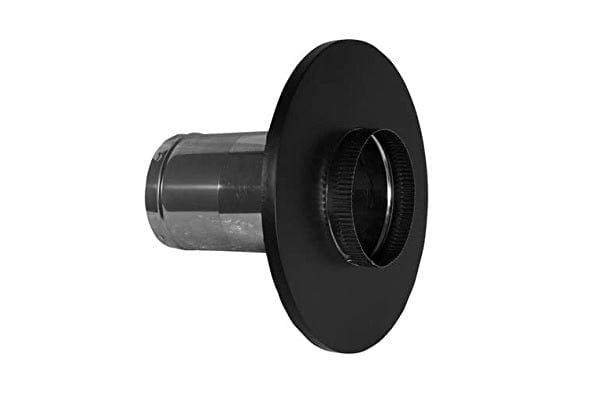Hey guys,
I am very close to completing my install. However, as @begreen and @bholler mentioned I need to make certain that minimum clearances are met. We went over this in the past and something led me to believe I was okay. It could have been that the DuraLiner I selected is a zero clearance product. What I did not account for is I doubt the thin stainless steel stuff that is going to run through the masonry thimble is also a zero clearance product.
My father built this hearth when I was very young and unfortunately is no longer with us. The only thing I can tell you is that the first layer of bricks clearly goes beyond/inside of the drywall. I can take a picture of that. The first picture is what I am planning on running through my thimble and the second one is my actual thimble that is going to go into the tee connection. It is also worth mentioning that my thimble is a 8" rather than a 6".
![[Hearth.com] Mason Hearth Clearance to Combustibles? [Hearth.com] Mason Hearth Clearance to Combustibles?](https://www.hearth.com/talk/data/attachments/323/323077-e150d6b82854fde46ca5ac2fbc5daff3.jpg?hash=eAnTejBnVE)
![[Hearth.com] Mason Hearth Clearance to Combustibles? [Hearth.com] Mason Hearth Clearance to Combustibles?](https://www.hearth.com/talk/data/attachments/323/323078-8266c38d1f1a95111b15ecf881d0b5e6.jpg?hash=IewkfCeGSw)
I am very close to completing my install. However, as @begreen and @bholler mentioned I need to make certain that minimum clearances are met. We went over this in the past and something led me to believe I was okay. It could have been that the DuraLiner I selected is a zero clearance product. What I did not account for is I doubt the thin stainless steel stuff that is going to run through the masonry thimble is also a zero clearance product.
My father built this hearth when I was very young and unfortunately is no longer with us. The only thing I can tell you is that the first layer of bricks clearly goes beyond/inside of the drywall. I can take a picture of that. The first picture is what I am planning on running through my thimble and the second one is my actual thimble that is going to go into the tee connection. It is also worth mentioning that my thimble is a 8" rather than a 6".
![[Hearth.com] Mason Hearth Clearance to Combustibles? [Hearth.com] Mason Hearth Clearance to Combustibles?](https://www.hearth.com/talk/data/attachments/323/323077-e150d6b82854fde46ca5ac2fbc5daff3.jpg?hash=eAnTejBnVE)
![[Hearth.com] Mason Hearth Clearance to Combustibles? [Hearth.com] Mason Hearth Clearance to Combustibles?](https://www.hearth.com/talk/data/attachments/323/323078-8266c38d1f1a95111b15ecf881d0b5e6.jpg?hash=IewkfCeGSw)



![[Hearth.com] Mason Hearth Clearance to Combustibles? [Hearth.com] Mason Hearth Clearance to Combustibles?](https://www.hearth.com/talk/data/attachments/323/323211-1e586cc1fa34442b1b67fd5e0db1c452.jpg?hash=17sBD28sHG)
![[Hearth.com] Mason Hearth Clearance to Combustibles? [Hearth.com] Mason Hearth Clearance to Combustibles?](https://www.hearth.com/talk/data/attachments/323/323212-fbef85d35726e2d9269ac920fac32944.jpg?hash=zaJnZ-YbLf)
![[Hearth.com] Mason Hearth Clearance to Combustibles? [Hearth.com] Mason Hearth Clearance to Combustibles?](https://www.hearth.com/talk/data/attachments/323/323256-2a6161dbe45793a87aa580e9a9c42469.jpg?hash=cOV_cIhHmv)
![[Hearth.com] Mason Hearth Clearance to Combustibles? [Hearth.com] Mason Hearth Clearance to Combustibles?](https://www.hearth.com/talk/data/attachments/323/323258-bfa4025cb870b4380284c1b5ae16e95f.jpg?hash=aPaaYdCkoM)